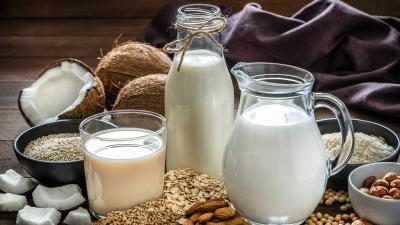Sonny Perdue: Keep Chocolate Milk Out of School Lunches
Dairy milk doesn’t do a body good—no matter the flavor or fat content—and shouldn’t be served in school lunches.
Dairy milk doesn’t do a body good—no matter the flavor or fat content—and shouldn’t be served in school lunches. But Secretary of Agriculture Sonny Perdue announced yesterday that he is directing the U.S. Department of Agriculture to allow schools to serve 1 percent flavored milk through the National School Lunch and School Breakfast Programs.
Milk creates a surprising range of health issues for students—from acne to bloating, cramps, and diarrhea for all those children who suffer from lactose intolerance, which affects approximately 65 percent of the human population, especially African-Americans, Hispanics/Latinos, American Indians, and Asian Americans. And because milk is naturally loaded with lactose sugar and plenty of calories—even before adding chocolate or strawberry flavoring—it’s about the same as soda when it comes to unwanted calories.
When those milk-drinking children reach adulthood, they are at higher risk for more serious health problems, including prostate and breast cancers, hip fractures, and even early death.
But students reduced their risk for these diseases when the USDA restricted flavored milk in school lunches a few years ago: “In just the first two years after low-fat flavored milk was removed from the program, 1.1 million fewer school students drank milk with their lunch,” said the National Milk Producers Federation yesterday.
That’s good for students, but bad for business. Sec. Perdue said yesterday that “we also have a responsibility to our shareholders.” Who are these shareholders? The dairy industry, of course. The International Dairy Foods Association said that “when kids don't drink milk, it's extremely difficult for them to get the proper amounts of calcium, potassium, vitamin D and other nutrients that dairy foods supply."
That’s simply not true. Grains, fruits, vegetables, legumes, and fortified foods can provide all of these nutrients—without the health risks of milk.
But Sec. Perdue says that “milk is a key component of school meals, meaning schools must have more options for students who select milk as part of their lunch or breakfast.”
Then one of those options should be plant milks, which would likely be more popular than flavored dairy milk. Sales of almond milk grew 250 percent between 2010 and 2015, while the total milk market shrank by more than $1 billion.
Sec. Perdue should put the health of the nation’s students before dairy industry shareholders by keeping flavored milks out of school lunches.







